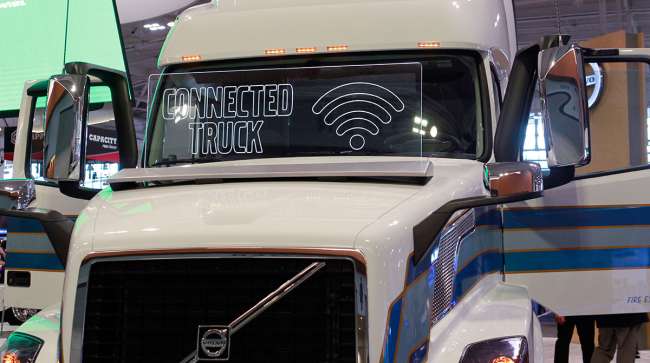Staff Reporter
Connecticut Plan Outlines Strategies for Connected, Automated Vehicles

[Stay on top of transportation news: Get TTNews in your inbox.]
Autonomous delivery services — and the challenges they present — are included as a consideration in the Connecticut Department of Transportation’s recently released strategic plan for connected and automated vehicles.
The plan, titled “Preparing for Connected and Automated Vehicles,” is the first of its kind for Connecticut. It outlines strategies for advancing multimodal CAV services and infrastructure to address current and future transportation needs.
The text of the plan notes that many freight companies have expressed interest in or have tested autonomous trucks, and indicates CTDOT will maintain an open dialogue with industry representatives and monitor potential risks linked to autonomous deliveries. The growth of e-commerce and demand for fast deliveries have contributed to an increase in trucks on roadways, according to the plan.
CT-CAV Report by Transport Topics on Scribd
“This presents unique policy and operational challenges for the CTDOT and Connecticut’s transportation system,” the plan states.
CAV technologies have the potential to enhance safety, improve mobility and accessibility, support economic growth and reduce congestion and emissions, according to the plan.
According to CTDOT, about 95% of roadway crashes in the U.S. are caused by human error. In Connecticut over the course of a typical year, some 100,000 crashes and 250 deaths occur as the result of human error.
Congestion costs each Connecticut driver about $1,000 in lost time and wasted fuel, the plan states. About 80% of commuters in Connecticut typically travel alone to and from work each day, and the average driver spends 40 hours per year sitting in traffic.

Giulietti
“Over the next few decades, advancing CAV technologies has the potential to drastically change mobility and our transportation systems in Connecticut and across the country” said CTDOT Commissioner Joseph Giulietti. “As innovation around these technologies continues to develop at a fast pace, we’re focused on ways Connecticut can benefit, especially with the potential for CAV to dramatically improve transportation safety.”
In the near term, the department will concentrate on facets of CAV technologies that have experienced advancements by industry and the public sector, such as deploying pilot projects, developing policy and assessing infrastructure and workforce readiness.

Even before the pandemic, DHL's Larry S. Onge and Jim Monkmeyer set up strategies and implemented technology in order to respond to disruptions. Now, they know exactly how to get the vaccine from point A to point B — and, better, how to do it at a global scale. Hear a snippet, above, and get the full program by going to RoadSigns.TTNews.com.
Looking beyond 2025, CTDOT will maintain a “feedback loop” to adapt to advancements in technology and policy. Subject to CTDOT’s capabilities and funding, the agency also will look for opportunities to implement infrastructure programs and services at a larger scale to support CAV technologies.
Preparing the workforce is another long-term challenge listed in the plan. The Connecticut Department of Labor reports, as of 2020, about 49,000 people in the state were employed in transportation and warehousing occupations. The plan notes CAV systems have the potential to displace members of this workforce, including drivers of trucks, buses and taxis. Beyond that, large portions of CTDOT’s workforce are expected to retire in the coming years.
“It is not only essential that outgoing positions be filled, but that the CTDOT also staff up and prepare the workforce with skills that meet both current and future needs,” the plan states. “Limited resources, partnerships with the private sector, universities and other transportation agencies may play a large role to fulfill this need.”
Want more news? Listen to today's daily briefing below or go here for more info:



